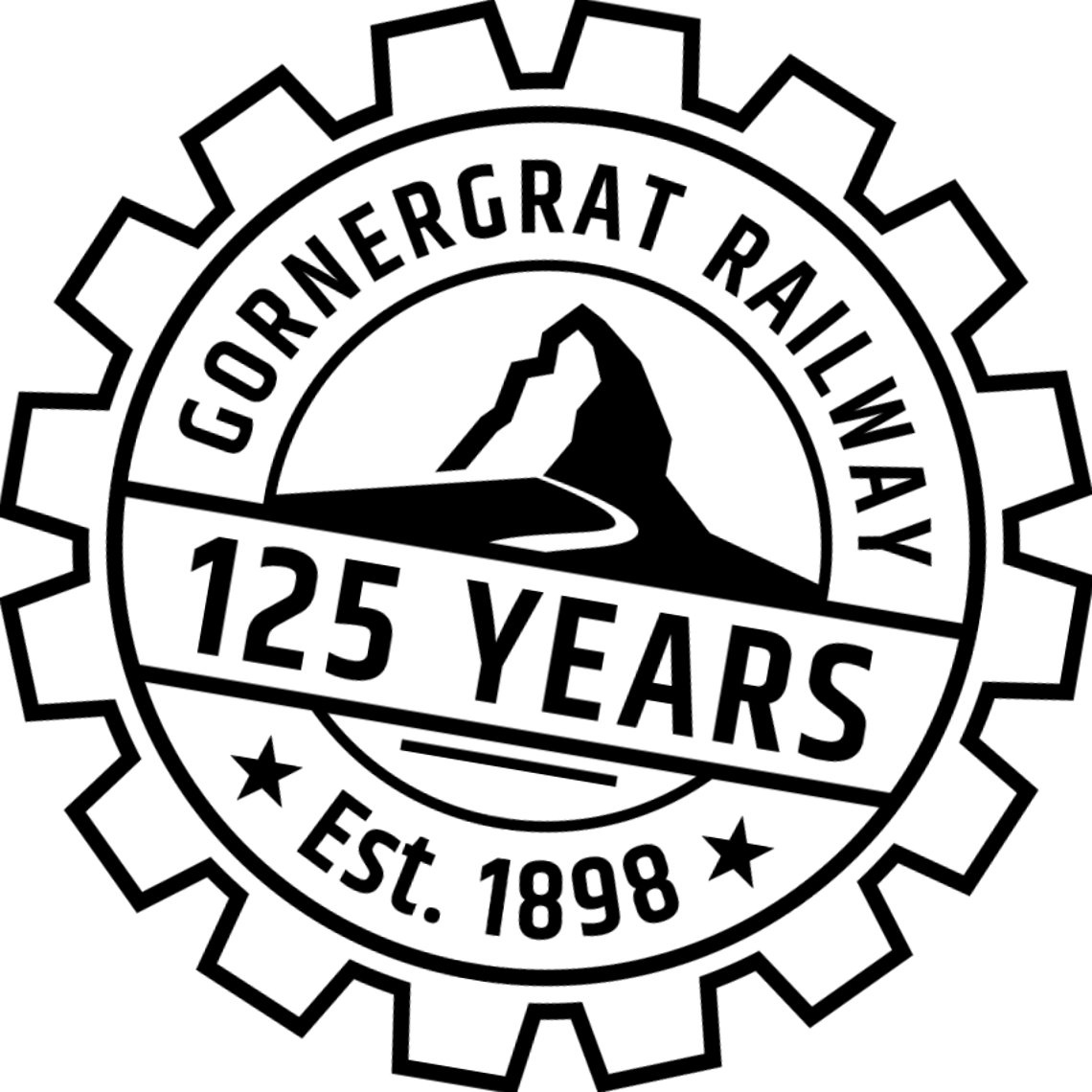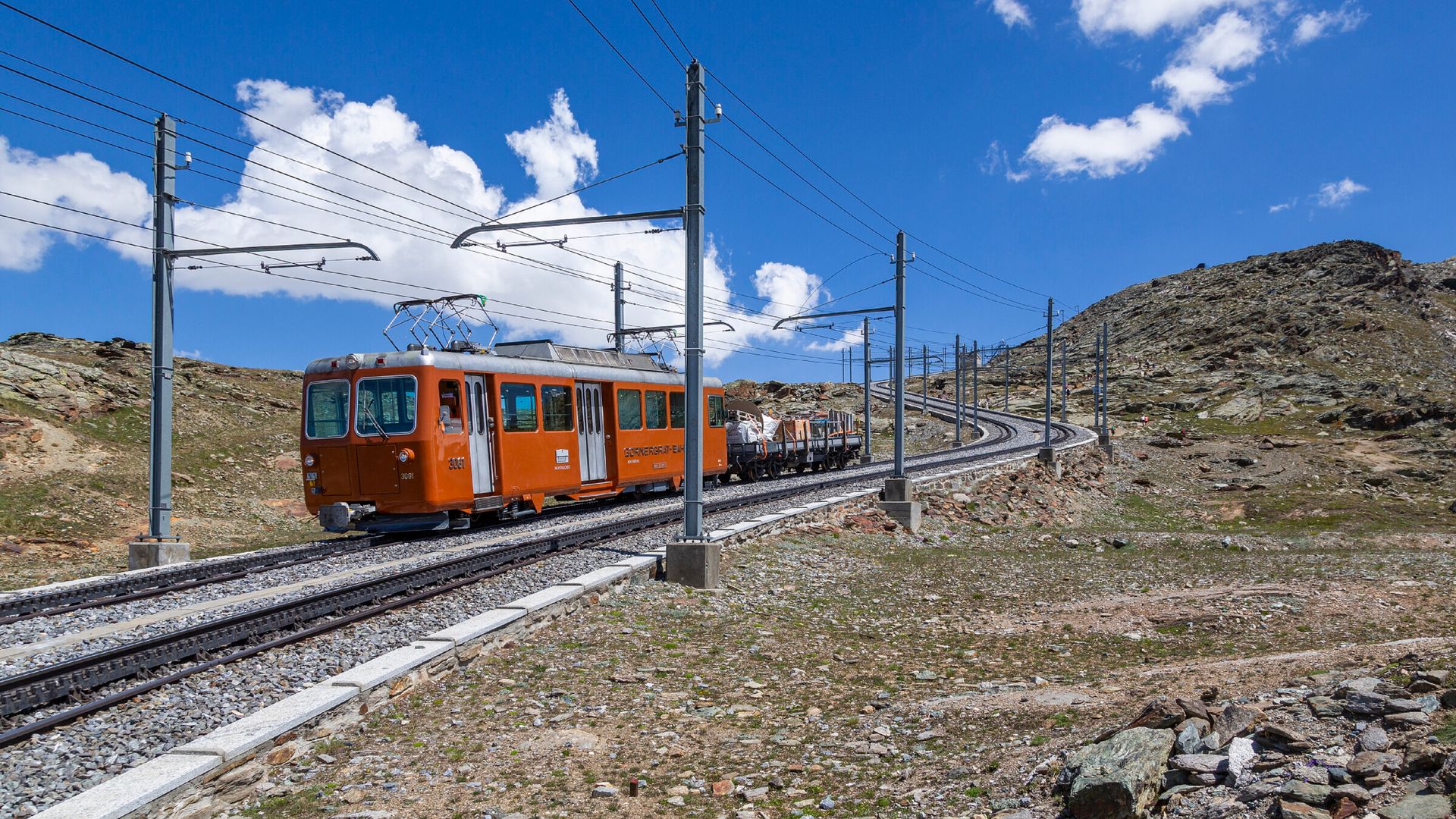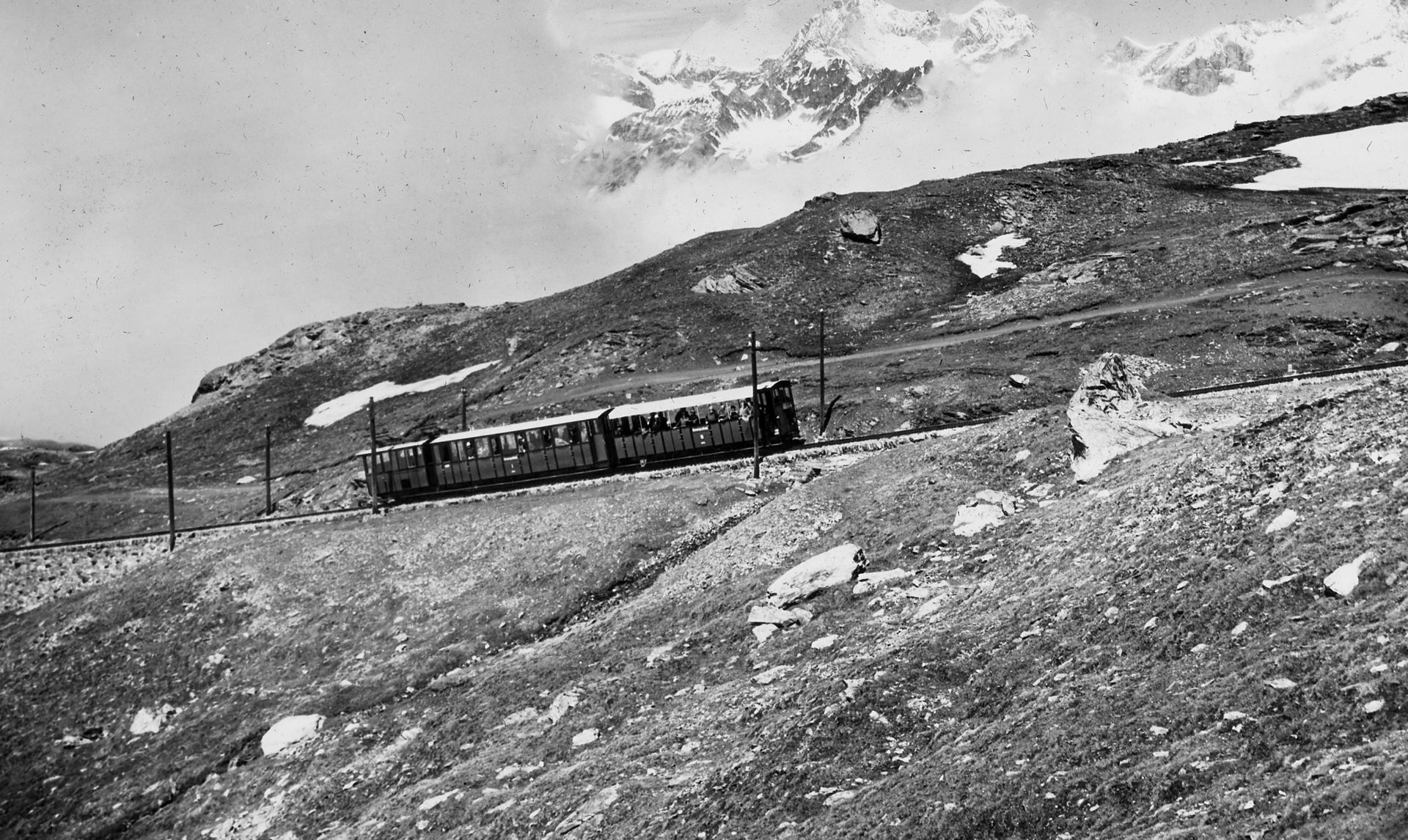Two railcars, many applications
Story 81
When the first Gornergrat Railway locomotives had to be replaced, the Gornergrat Railway purchased two new railcars for seven million Swiss francs in 1981. The former Head of Rolling Stock & Traction, Hans Tribolet, recalls the episode in this interview.
Hans Tribolet, at the end of the 1970s, the Gornergrat Railway investigated buying two new railcars. What were the demands that had to be met?
Hans Tribolet: “We were looking for a universal vehicle to replace the old two-axle locomotives that had been in use since the opening of the Gornergrat Railway in 1898. It had to meet three basic requirements: 1. In the snow-plough service, it needed to be more powerful and be able to be better controlled at different driving speeds. 2. In freight transport, it had to be able to handle processes more quickly and safely. 3. It had to be able to support passenger transport if necessary.”
Were there any technical challenges you had to solve?
Hans Tribolet: “We designed the railcar so that, for the first time, an independent control car could be automatically coupled without the intervention of shunting personnel. In order to meet these requirements, additional and new technical equipment was required.
What is the lifespan of the vehicles?
Hans Tribolet: “The vehicles have been working reliably for over 40 years. They will certainly continue to serve the railway well for many years to come. In principle, there is virtually no end of service life providing there is good and regular maintenance.
Do you associate special memories with the new railcars?
Hans Tribolet: Yes, I have a lot of very positive memories. In my position, I had to accompany snowplough trips on a regular basis. I have always been very impressed by the power of these machines and the work that goes on early in the morning. I also particularly remember the missions when we had to push the comfortable Rhaetian Railway Pullman saloon cars up the Gornergrat. The nostalgic trips started in St. Moritz and took the Glacier Express route to Zermatt, with the trip up the Gornergrat being a highlight. Incidentally, these trips are still available today. Open-air rides were also an attractive offer of the railway back then. In an open car, you could enjoy the view, feel the wind and smell the scent of the Swiss pine in the woods.
How important was this purchase for the Gornergrat Railway?
Hans Tribolet: The new multifunctional vehicles made it possible to significantly increase the flexibility of the railway. In freight transport, we were able to handle larger loads and snowplough operations became more efficient. It was also important that we were able to increase passenger transport, which was always subject to the weather, when demand was high.
Background information
From 1947 onwards, light alloy railcars replaced the first locomotives of the Gornergrat Railway. The old locomotives were then mainly used for freight transport and winter maintenance. By the end of the 1970s, they were no longer suitable for this purpose either and had to be replaced.
In 1981, the Gornergrat Railway put two new railcars (3061/3062) with cab cars (3071/3072) into service.
Hans Tribolet began his career with the Brig-Visp-Zermatt Railway and the Gornergrat Railway in 1970 as a mechanical engineer. Later, he was appointed Head of Rolling Stock and Traction and a member of the Executive Board. The procurement of the railcars for the Gornergrat Railway was one of his numerous projects. Tribolet retired at the end of May 2003.


